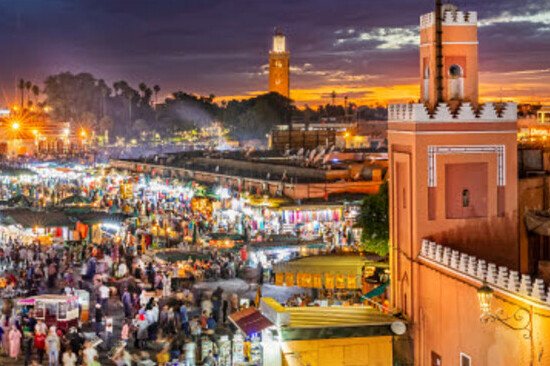Moroccan cuisine is much more than a simple taste experience; it’s a veritable voyage of a thousand flavors that tantalizes taste buds the world over. Its rich and diverse history, its ingenious use of spices and herbs, and its emblematic dishes make it a must for food lovers.
The history of Moroccan cuisine
Moroccan cuisine, the rich inheritor of a multi-millennial history, draws its essence from the many cultural influences that have shaped the region through the ages. Berber, Arab, Jewish, African and European traditions blend harmoniously to create a palette of flavors as diverse as they are exquisite. Spices such as cumin, saffron and cinnamon perfume emblematic dishes like couscous, tajine and pastilla. This culinary fusion reveals Morocco’s complex identity, where every ingredient tells a story, every dish evokes a tradition, and every meal embodies a moment of sharing and conviviality.
Cultural and geographical influence
Morocco, at the crossroads of Africa, Europe and the Middle East, boasts a rich gastronomy, the fruit of its geographical diversity. The Atlas mountains offer robust, spicy dishes, while the Atlantic coasts offer fresh fish delicacies. The Sahara, meanwhile, inspires dishes of dates and subtly flavored couscous. Each region imbues Moroccan cuisine with its own identity, creating a symphony of flavors, spices and textures. Tajines, couscous, pastillas and mint tea are all culinary gems that bear witness to this unique gastronomic richness.
Use of spices and herbs
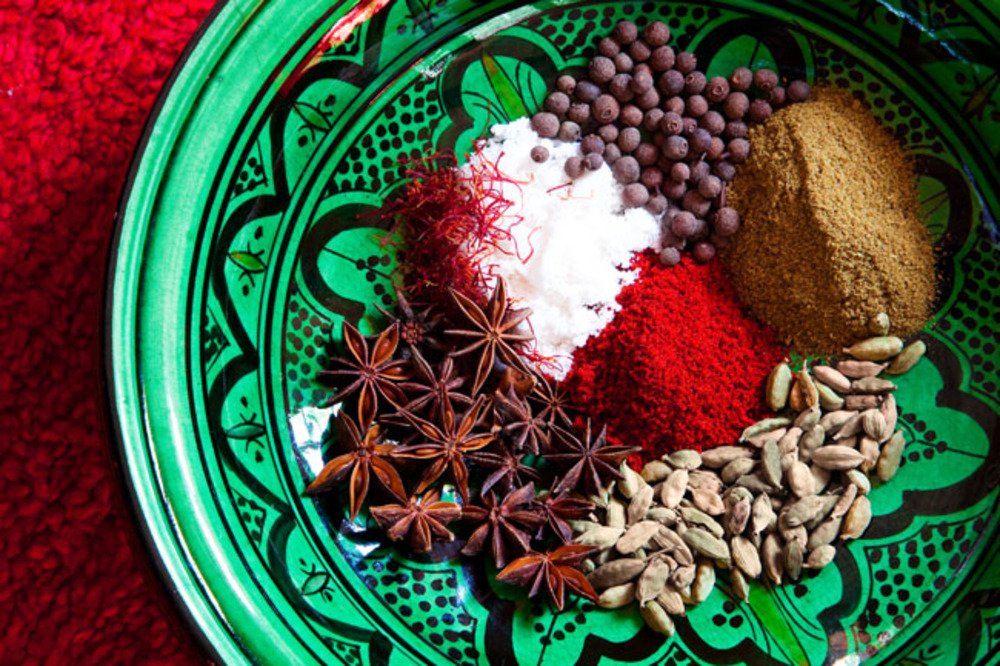
Moroccan cuisine is distinguished by its astute use of spices and herbs, the true jewels of its flavors. Among these, cumin, saffron, ginger, cinnamon and paprika take pride of place, bringing an incomparable richness of flavor to dishes. Cumin offers an earthy note, saffron a luxurious touch, ginger a subtle warmth, cinnamon an exotic sweetness and paprika a smoky depth. These ingredients intermingle to create a complex palette of flavors, evoking the ancestral culinary traditions of Morocco.
Couscous: the must-try dish

Couscous, Morocco’s culinary flagship, combines fine semolina with a range of meats, vegetables and legumes. Steamed, it reveals a light, airy texture, imbued with age-old traditions. This emblematic recipe embodies the art of Moroccan gastronomy, subtly blending flavors and savoir-faire. Every region of the country, indeed every household, adds its own personal touch, enriching an already rich culinary heritage. Couscous transcends borders to become a universal symbol of conviviality and sharing, celebrating the richness and diversity of Moroccan cuisine.
Tagine: a stewed delight
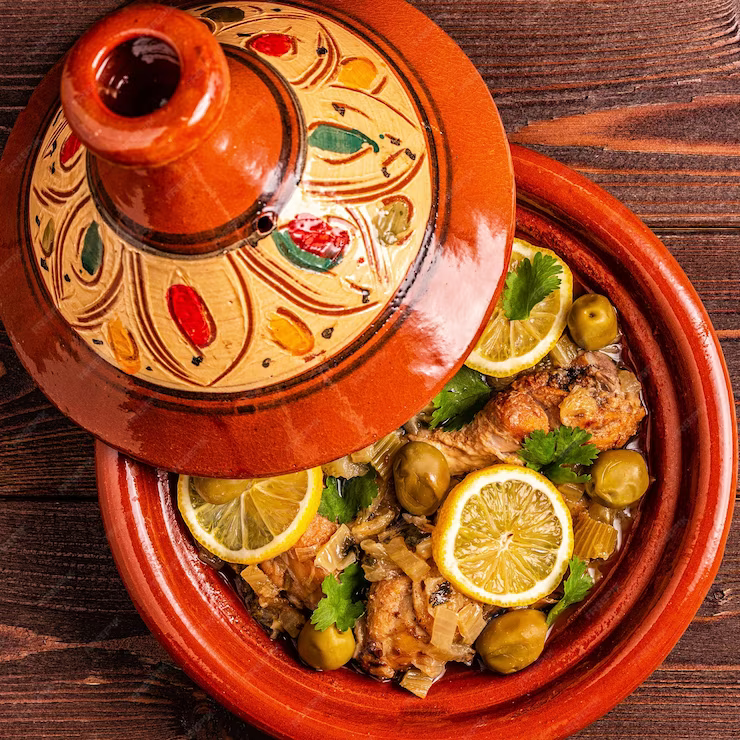
Tagine, a traditional dish from the Maghreb, takes its name from the earthenware vessel in which it is prepared. This slow cooking allows the meats, vegetables and spices to release their aromas, creating an explosion of flavor in every bite. Typically simmered for hours, tagine offers a rich, comforting culinary experience, where ingredients blend harmoniously to create a feast for the senses. This combination of textures and tastes makes tagine a dish not to be missed, appreciated as much for its delicacy as for its conviviality and festivity.
Pastilla: a sweet and savory fusion
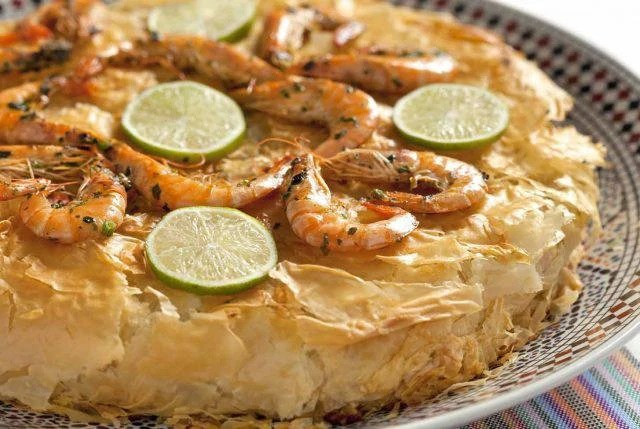
Pastilla embodies the harmony between sweet and savory in Moroccan gastronomy. This crunchy delicacy contains a generous filling of pigeon or chicken meat, enhanced by the subtle combination of almonds and cinnamon. Traditionally sprinkled with powdered sugar, it offers an exquisite marriage of flavors where sweetness meets the richness of spices. This specialty, skilfully prepared in layers of puff pastry, testifies to the refined culinary art of Morocco, where each bite awakens the senses to a symphony of tastes and textures, inviting you on a gustatory voyage.
Harira
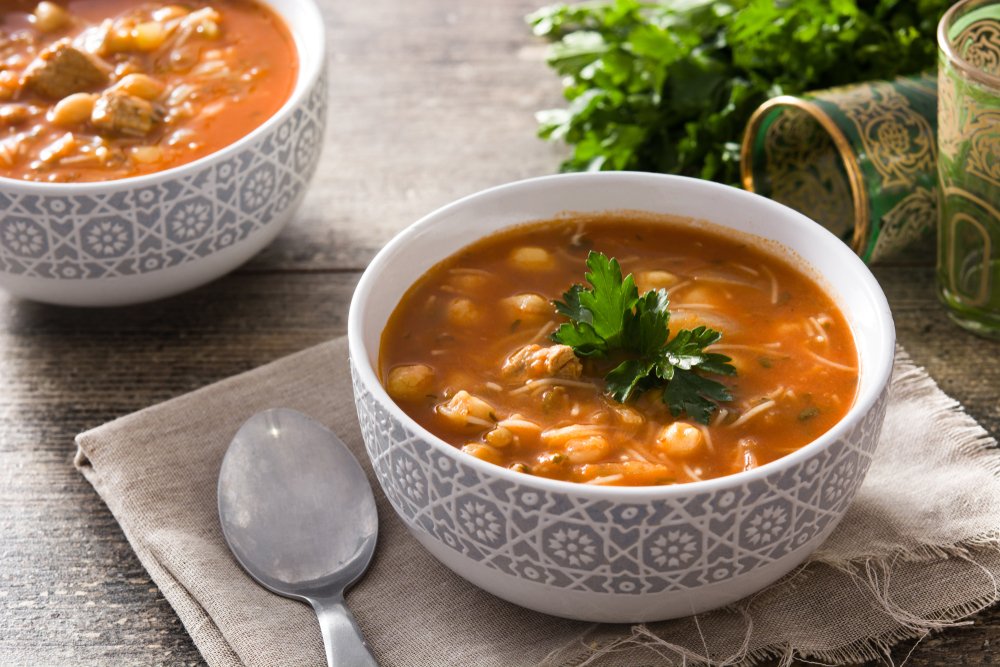
Harira, the delicious Moroccan soup, is much more than just a dish. Traditionally eaten during Ramadan, it symbolizes family sharing and spirituality. Prepared with juicy tomatoes, creamy chickpeas, nutritious lentils and tender pieces of meat, it offers an explosion of flavors and textures. Exotic spices like cumin and cinnamon, along with the freshness of coriander, give it a unique, bewitching character. Served with sweet dates and fresh bread, it brings guests together around values of generosity and gratitude, making each spoonful a journey to the heart of Moroccan culture.
Spices: the key to Moroccan flavor
In Moroccan cuisine, spices are much more than ingredients; they embody an age-old tradition and a refined culinary art. Each blend, from the famous ras el hanout to the subtle zaatar, is the fruit of know-how handed down from generation to generation. These spices, rich in history and diversity, reveal Morocco’s gastronomic identity to the world. Their meticulous use creates flavors that tantalize the taste buds and enchanting aromas that transport guests on an unforgettable sensory voyage, turning every dish into a veritable work of gustatory art.
Argan oil: a culinary treasure
Argan oil, derived from the nuts of the argan tree, is a precious essence rooted in Moroccan cuisine. Renowned for its subtle flavor and creamy texture, it is a delicious addition to salads, tagines and fish dishes. In addition to its gustatory qualities, it abounds in health benefits, notably due to its richness in essential fatty acids and antioxidants. Traditionally produced by Berber women’s cooperatives, this oil embodies an ancestral know-how and a cultural heritage deeply rooted in the Maghreb region. Its use in Moroccan gastronomy bears witness to a rich and diversified culinary tradition, where each ingredient is carefully chosen to sublimate local flavors.
Candied lemon: the essential citrus fruit
An essential ingredient in Moroccan cuisine, preserved lemons add a subtle acidity and welcome freshness to rich, spicy dishes. Used in tagines, couscous and salads, its unique flavor perfectly complements traditional recipes. The method of preserving preserved lemon, often using salt and lemon juice, gives it a tender texture and intense flavor that make it an indispensable part of Moroccan gastronomy.
Mint tea: a ceremony

Mint tea, the emblem of Moroccan hospitality, transcends simple rituals to become a symbol of conviviality. Its meticulous preparation and service in beautifully crafted glass glasses testify to the refinement of Moroccan tradition. This sweet, refreshing drink, scented with fresh mint, is much more than a simple beverage; it embodies the art of entertaining and creates precious social links at the heart of Moroccan culture.
Festive meals: a family affair
Festive meals are an essential pillar of Moroccan culture, symbolizing conviviality and sharing. From Eid al-Fitr to traditional weddings, these occasions bring families and friends together in culinary abundance. Tables are set with a variety of delicacies, from tagines to couscous, accompanied by fresh salads and crusty breads. Sweet desserts such as almond and honey pastries round off these feasts, offering a rich and memorable taste experience.
Ramadan: a month of sharing and gastronomy
During the month of Ramadan in Morocco, culinary traditions take on particular importance. Families gather to break the daily fast with rich and varied meals of traditional fare. These moments shared around the table strengthen family ties and create unforgettable memories. Emblematic dishes such as couscous, tajines and pâtisser are carefully prepared to celebrate this sacred time of year.
Conclusion
Moroccan cuisine is much more than just a culinary experience; it’s a true art of living that transcends borders and cultures. Through its exquisite flavors, age-old traditions and legendary hospitality, it offers an unforgettable sensory journey to gourmets the world over. From emblematic dishes such as couscous and tagine to its meticulous presentation and refined aesthetics, Moroccan cuisine continues to seduce and inspire, testifying to the richness and diversity of Moroccan culture.
FAQs
- What are the essential ingredients of Moroccan cuisine? The basic ingredients of Moroccan cuisine include couscous, spices such as cumin and cinnamon, argan oil, olives, dried fruit and citrus fruit.
- What makes Moroccan cuisine unique? Moroccan cuisine is unique because of its subtle combination of historical influences, its variety of spices and herbs, its traditional cooking methods and its art of presentation.
- What are the most popular traditional Moroccan dishes? Among the most popular traditional Moroccan dishes are couscous, tagine, pastilla, harira, as well as various salads and tagines.
- On what special occasions is Moroccan cuisine showcased? Moroccan cuisine is often featured at Eid meals, weddings, Ramadan and other festive occasions when families get together to share tasty dishes and convivial moments.
- How can I learn to cook Moroccan dishes at home? To learn how to cook Moroccan dishes at home, you can follow online recipes, watch video tutorials, or even take part in specialized cooking classes. You can also experiment with different ingredients and spices to create your own variations on classic Moroccan dishes.


